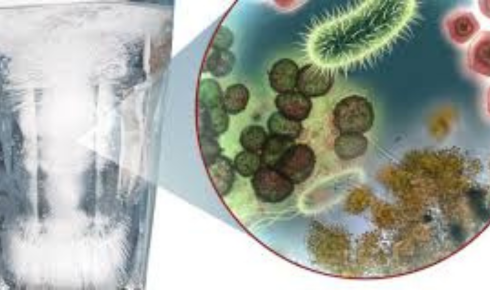There’s something deeply unsettling about realizing the water flowing from your tap — something you drink, cook with, and bathe in daily — might not be as pure as it looks. We tend to assume that clear water equals clean water, but that’s not always the case. Beneath its surface can lurk microscopic troublemakers capable of causing anything from mild stomach upsets to serious disease. One of the most underestimated threats? Bacteria in water — tiny, invisible organisms that can make a big impact on your health.
The Calm Surface, the Hidden Chaos
Water feels like the simplest thing in the world. You pour a glass, take a sip, and don’t think twice. But that same clarity hides a complexity that’s almost poetic. Water is a carrier — of minerals, nutrients, and unfortunately, contaminants. Bacteria thrive in environments that are damp and nutrient-rich, making water the perfect medium.
What’s more alarming is that many harmful bacteria are odorless and tasteless. You won’t always see cloudy water or detect a foul smell as a warning. In fact, some of the most dangerous bacteria — like E. coli or Legionella — are completely undetectable without proper testing. And the places they show up can surprise you: your kitchen faucet, your well water, even that refillable water bottle you keep on your desk.
How Waterborne Bacteria Sneak Into Your Life
It’s not always industrial waste or dirty rivers. Sometimes the source is far closer to home. Leaky plumbing systems, poorly maintained water heaters, or aging municipal pipelines can all become breeding grounds for waterborne bacteria. Even rainfall runoff from farmlands — loaded with animal waste — can seep into groundwater, contaminating private wells.
Consider this: a single drop of contaminated water can contain millions of bacteria. And you don’t have to drink it to get sick. Inhaling steam from a shower contaminated with Legionella, for instance, can cause severe respiratory infections. Swimming in a pond that looks crystal clear might expose you to harmful pathogens.
It’s not paranoia — it’s just the reality of how bacteria move. They’re ancient, adaptive, and far more resourceful than we give them credit for.
The Subtle Signs Something’s Off
Sometimes, the body becomes the messenger. If you’ve ever had a sudden stomach bug after drinking tap water in a new location or experienced odd rashes after bathing, it might not have been “just bad luck.” Mild gastrointestinal discomfort, nausea, or fever are often brushed off as food-related, but bacterial contamination in your water supply could be the real culprit.
Families with infants, elderly individuals, or anyone with weakened immunity are especially vulnerable. Even minor exposure can lead to dehydration or longer-lasting health issues. The frustrating part is that symptoms can take days to appear, making it hard to pinpoint the source.
Testing — The Step Most People Skip
Water testing isn’t something homeowners think about often, but it should be. Just as you get your car serviced or check your smoke detectors, testing your water for bacterial presence is essential. Many local health departments or private labs offer affordable testing kits that can detect coliform bacteria, including E. coli.
If results come back positive, it’s not the end of the world. There are solutions — shock chlorination for wells, filtration systems, UV disinfection, and even point-of-use filters that can remove bacteria right at your tap. The key is awareness. Once you know what’s in your water, you can take the right steps to fix it.
A Bit About How Bacteria Behave
Bacteria don’t just “float around.” They build communities — biofilms — that attach to pipe walls, water tanks, and filters. These slimy layers protect them from disinfectants and allow them to multiply quietly. Once established, removing them isn’t easy. This is why maintaining water systems regularly is critical. A neglected tank or uncleaned filter can become a bacterial playground.
And while chlorine, UV light, and reverse osmosis systems are highly effective, no single solution works for everyone. Rural areas, especially those relying on groundwater, face unique challenges. It’s not just about technology — it’s about consistency.
Prevention Is Simpler (and Cheaper) Than Cure
The best defense isn’t complicated science; it’s routine vigilance. Replace filters on schedule. Keep an eye on plumbing leaks. Clean storage tanks periodically. And most importantly, educate yourself and others about safe water practices.
If you rely on private well water, make testing an annual habit. After heavy rains or floods, do it again — because contamination can happen suddenly. For those on city water, check local reports and stay informed about maintenance alerts.
The Emotional Side of Safe Water
Clean water isn’t just a utility; it’s peace of mind. It’s knowing your child’s morning glass of water won’t lead to a hospital visit. It’s about trust — in your home, your community, your infrastructure. But trust should never mean complacency.
Every glass of water carries a story — of where it came from, how it traveled, and what it picked up along the way. By paying attention to that story, you protect more than your health; you safeguard your daily rituals, your family’s comfort, and your sense of security.
The Bottom Line
Bacteria are natural, even necessary, in many parts of our world. But not in our drinking water. The next time you pour a glass, remember that clarity doesn’t always equal purity. Take the time to test, clean, and stay aware. Because when it comes to your health, invisible doesn’t mean harmless.
Safe water starts with knowledge — and just a little bit of curiosity about what’s really flowing through your pipes.

